Affiliate disclosure: This post may contain affiliate links. Please see our Privacy Policy.
Chicken egg deformities are quite common, though you won’t find them at the grocery store. All these strange-looking eggs are sorted out long before they hit the supermarket shelves, but if you’re keeping backyard chickens, there’s a good chance you’ll have each one of these in your egg basket at some point. Some are just flukes, but others can be a warning sign of stress or nutrient deficiency. I’ll take you through each common chicken egg deformity, as well as what causes it, so you can figure out what’s happening with your flock.
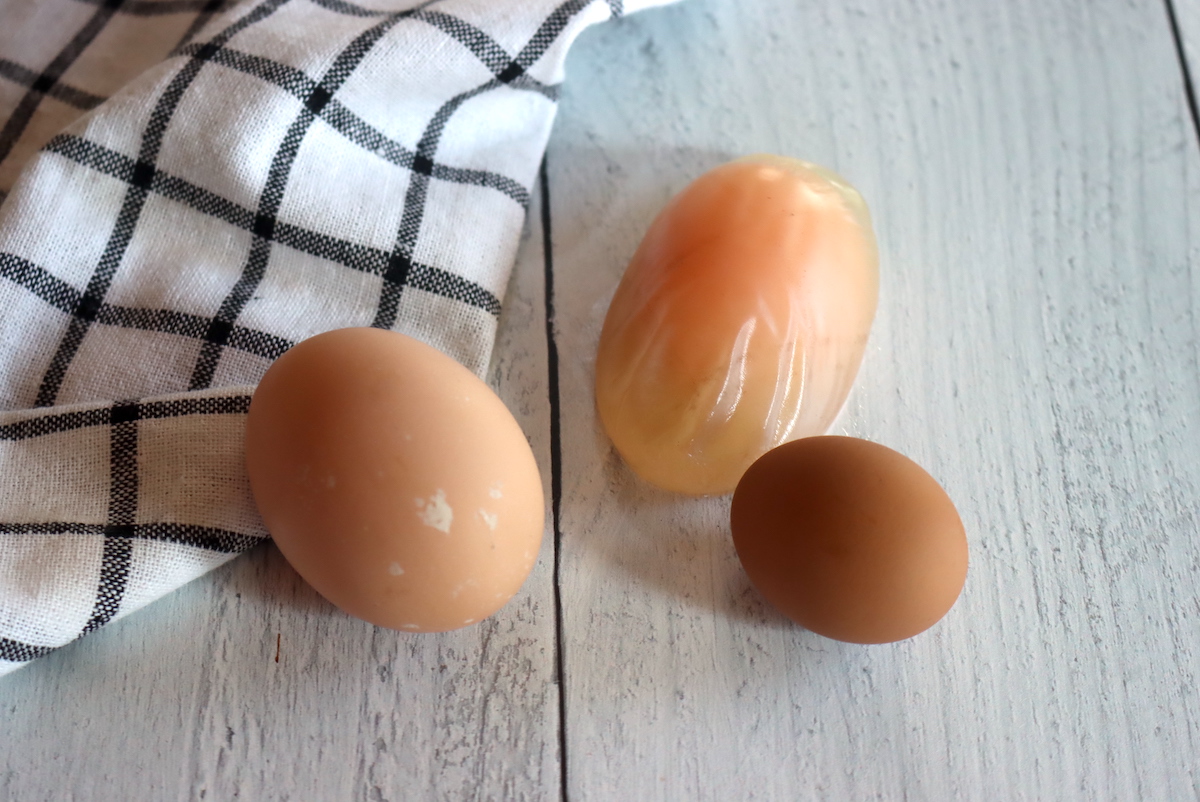
If you’re planning on keeping chickens for egg-laying purposes, you’re likely to see a few deformed eggs from time to time, especially if you have lots of hens. There are several different types of deformities and several reasons they might happen. Some reasons can include the hen’s age, species, environment, and care, to name a few.
Here are a few deformities you might see coming from your coop (and how to fix them).
Double-Yolk Eggs
For most chicken keepers, a double-yolk egg is considered a bonus breakfast! But in reality, it’s a defect that is most often caused by more than one yolk being released from the ovary and into the reproductive tract. There is usually a 30-to-70-minute gap between yolk releases. But for young pullets just coming into lay and older hens that are winding down their cycle, it can happen much sooner, allowing two yolks to be encased in a single shell.
Heavy breeds, such as Orpingtons and Rhode Island Reds, are more likely to lay double yolks, as are prolific layers of large eggs, like white leghorns, but it can happen to any chicken.
Double yolks are considered a rarity, with a probability of about 1 in 1,000 eggs. So, if you have ten hens in your backyard, you can expect from one to three double yolkers a year. These odds increase with older hens, but it isn’t something that often happens from the same hen.
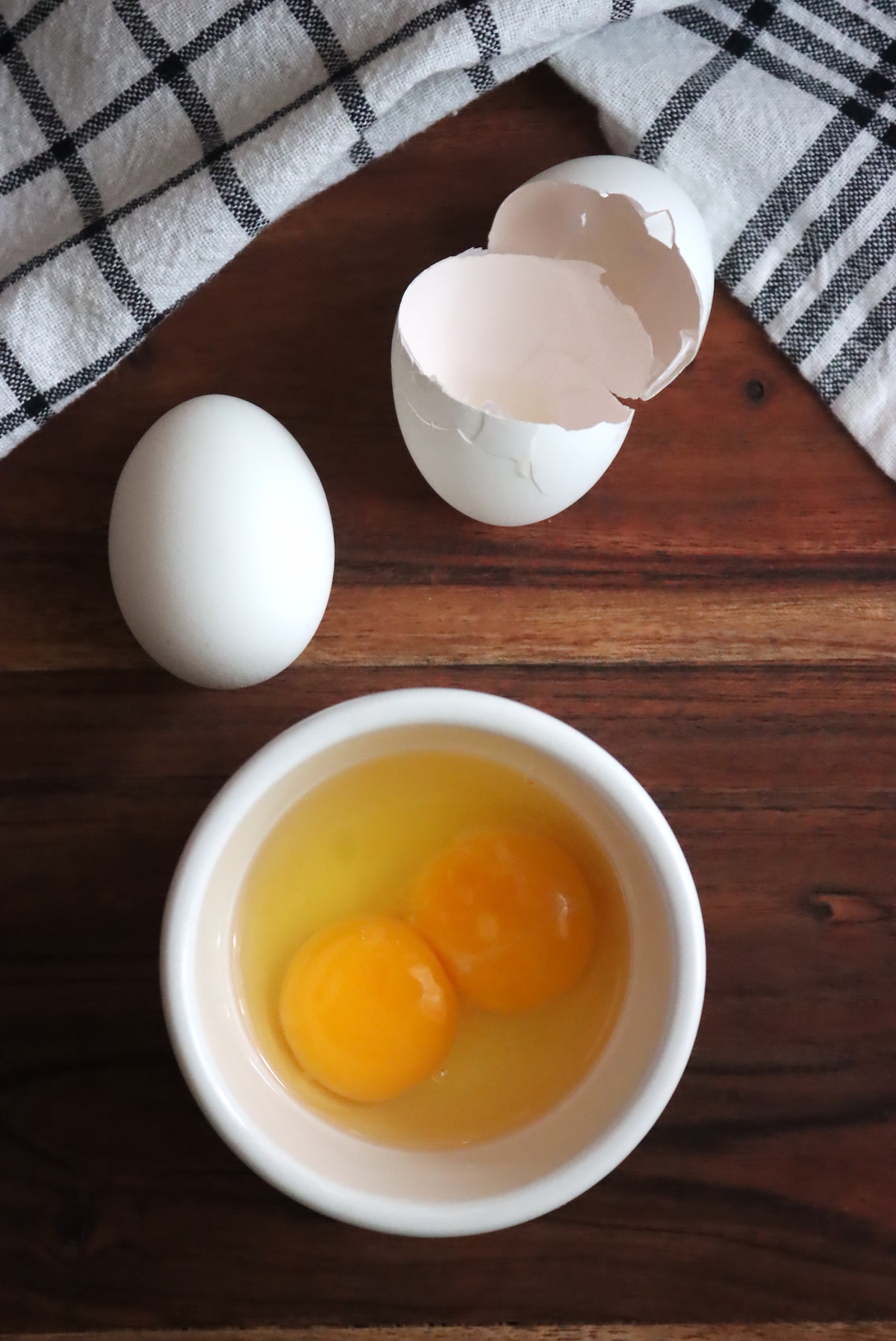
Egg Inside an Egg
An egg inside an egg can happen in a few different ways. One is that there is a perfectly formed egg inside another perfectly formed eggshell. Another is that there is a regular-sized egg inside a rubbery shell. But you might also see a regular egg with what appears to be a smaller version of an egg inside it. The fact is that this is an abnormality, so there are no precise ways that it shows up.
The egg-laying process is actually ovulation, so the process moves forward, usually in a typical fashion. First, the oocyte is released from the ovary, which becomes the yolk of the egg. This deformation happens about once every 18 to 26 hours. Next, it travels through the oviduct organ on its way toward the vent, where it’s then time to lay.
If a “counter-peristalsis contraction” happens, the egg slips backward during this progression, where it’s reintroduced to the shell-making part of the journey.
This phenomenon is very rare, and most chicken keepers won’t ever see it. But if you do, you probably will never see it again.
If you’re curious, the video below shows one of these “egg inside an egg” anomalies being cracked open:
Eggs Without a Yolk
Eggs without a yolk are so common they actually have a name. However, that name can vary greatly, depending on who you talk to, including:
- Fairy egg
- Wind egg
- Oops egg
- Witch egg
- Dwarf egg
- Rooster egg
As with other deformities, the cause is often that the hen is young (a pullet) or old, but stressed hens can lay fairy eggs, too. Insufficient nutrients, illness, or pests may lead to this production, but sometimes, it just happens for no reason. Hence, the name “oops” egg!
While most yolk-less eggs are not a problem, and it does occur from time to time, there’s usually no reason to be concerned. However, if it’s something that starts to happen often, be sure to inspect the flock for disease, stress, malnutrition, or other facts. If you find something that warrants your attention, be sure to take care of the problem promptly.
There are no specific chickens that are most likely to see this occurrence, as it is one of the more common egg deformities. However, it’s dependent on such a variety of causes that it could happen to any hen.
Eggs Without a Shell
An egg without a shell is an interesting sight to behold. It looks like a rubber egg, with a squishy or misshapen outer “shell.” Unfortunately, this is common in chickens that start laying early, especially without the added nutrition, including calcium and D3. But it can also happen if they drink water that has been excessively softened or has a high salt content.
In other cases, a defective shell gland could be the culprit, and in such cases, there’s not much you can do to stop it.
Shell-less egg production is another egg issue that doesn’t seem to be breed-specific and is actually quite common. The more hens you have in your flock, the more likely you are to see shell-less eggs, and the probability also rises with lots of young or old hens.
To combat rubbery egg possibilities, use feed with good nutritional content and plenty of easy-to-absorb dietary calcium. Quality layer feed is always the best option.
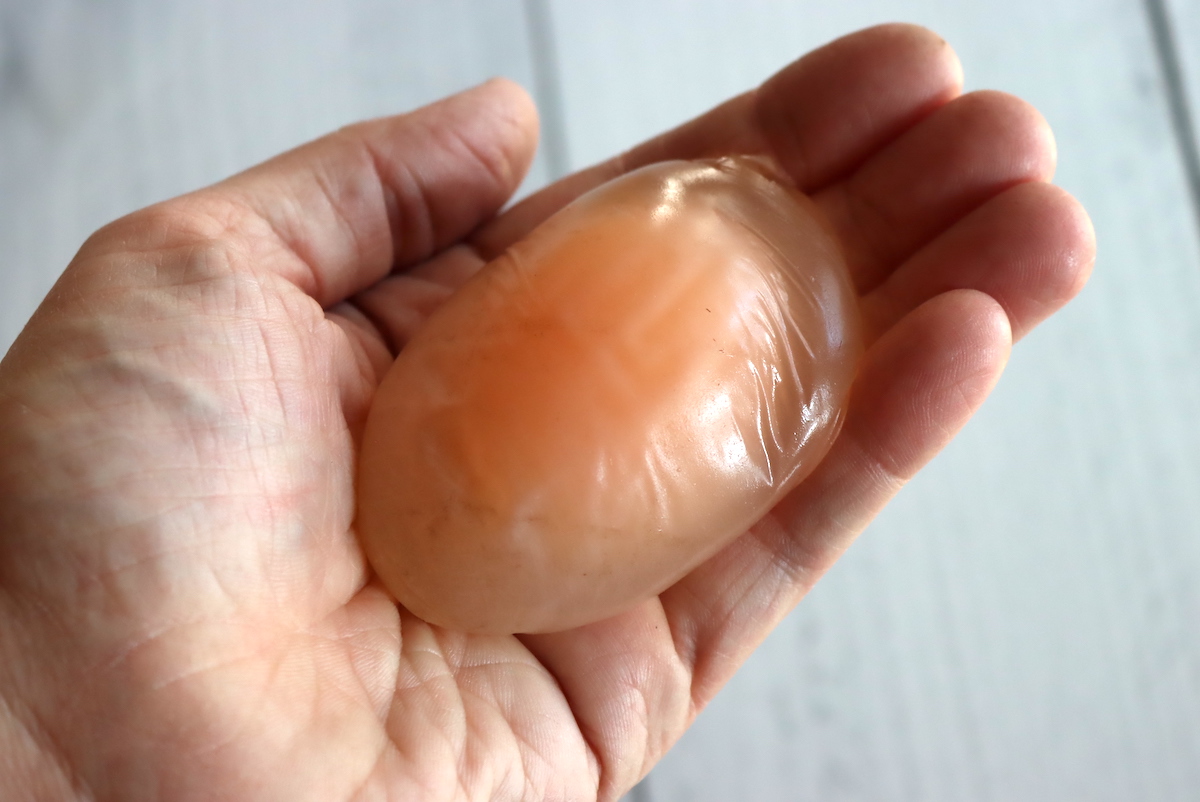
Soft Shelled Eggs
These eggs do technically have a “shell” but it’s so soft that you can barely hold them without breaking it. Others won’t be rigid at all, and almost seem like shell-less eggs, but there’s a thin layer of calcium deposited on the outside of the egg membrane. You can move these around in your hand like play dough, and the “shell” just moves with it…without cracking.
Like any egg deformity, soft-shelled eggs happen from time to time, even in healthy flocks. If you’re seeing more than one in a blue moon, that’s cause for concern. Potential causes for soft shell eggs include poor quality feed, moldy feed, low calcium, contaminated feed (mycotoxins), salty water, or excess phosphorus in the diet.
White or Brown Speckled Eggs
Some breeds naturally lay speckled eggs, and that’s a genetic trait. Usually the speckles are brown, but they can be a variety of colors.
Occasionally, you’ll get speckled eggs from hens that don’t have the genetic “speckling” trait, and those eggs are the result of calcium deposits laid down on the egg before the final cuticle (or color layer) goes onto the outside. (Calcium deposits also happen at the very last stage, which is the next defect discussed below.)
If the deposit happens earlier, this is usually caused by disturbances in the henhouse, or stress when that egg was being formed. Too much calcium in the hen’s diet can also be the cause. Either way, this defect doesn’t impact the quality of the egg, and they just have extra color.
Eggs with Calcium Deposits or Buildup
If you find an egg with a calcium deposit, it may come in a variety of shapes and sizes. It can happen to any egg from any chicken breed and can be caused by a defective shell gland or an issue with the calcification process during the formation of the egg. Adding extra D3 to your flock’s food can solve the problem.
Excess calcium can also show up in the form of speckling and “pimpling,” which are variations of the disturbance.
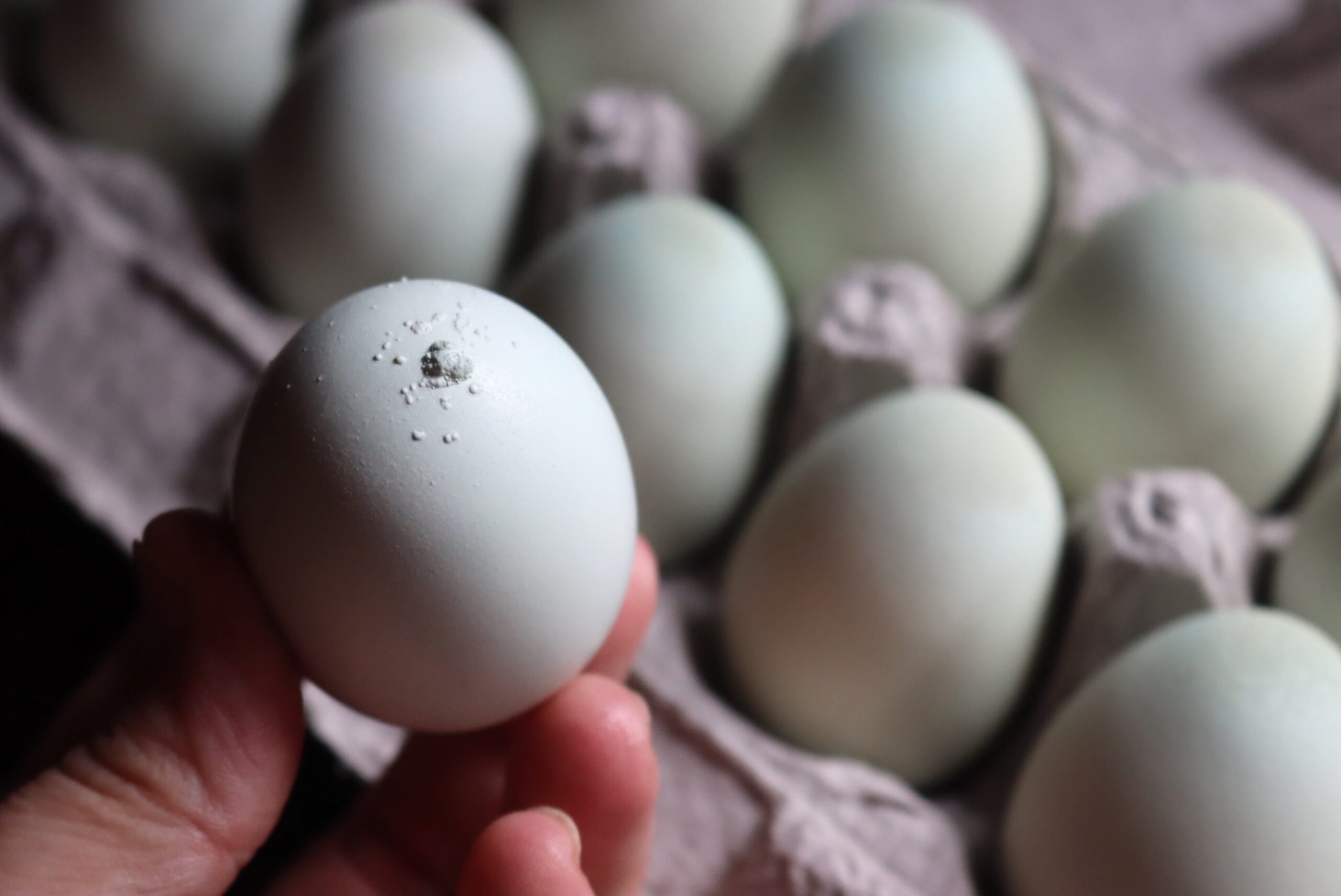
There are no chicken breeds that are more susceptible to these deposits than others, and the eggs are just fine to eat. Larger deposits may make the eggs prone to cracking if jostled around, but they will work well on the breakfast table under normal circumstances.
I have noticed that certain individual chickens tend to lay eggs with small deposits, or pimplings, on a regular basis, and I believe it may be a genetic trait (like rough eggshell texture versus smooth). I have one Ameraucana chicken that lays one with tiny “pimples” at the top of the egg ever single day, rain or shine. She’s happy as a clam, and eating the same diet as everyone else….that’s just how her body makes eggs.
My kids call her “Fanciness” because she’s a pretty chicken and because of her extra-fancy eggs. For fun, sometimes I pack them up by the dozen, making a matched set.
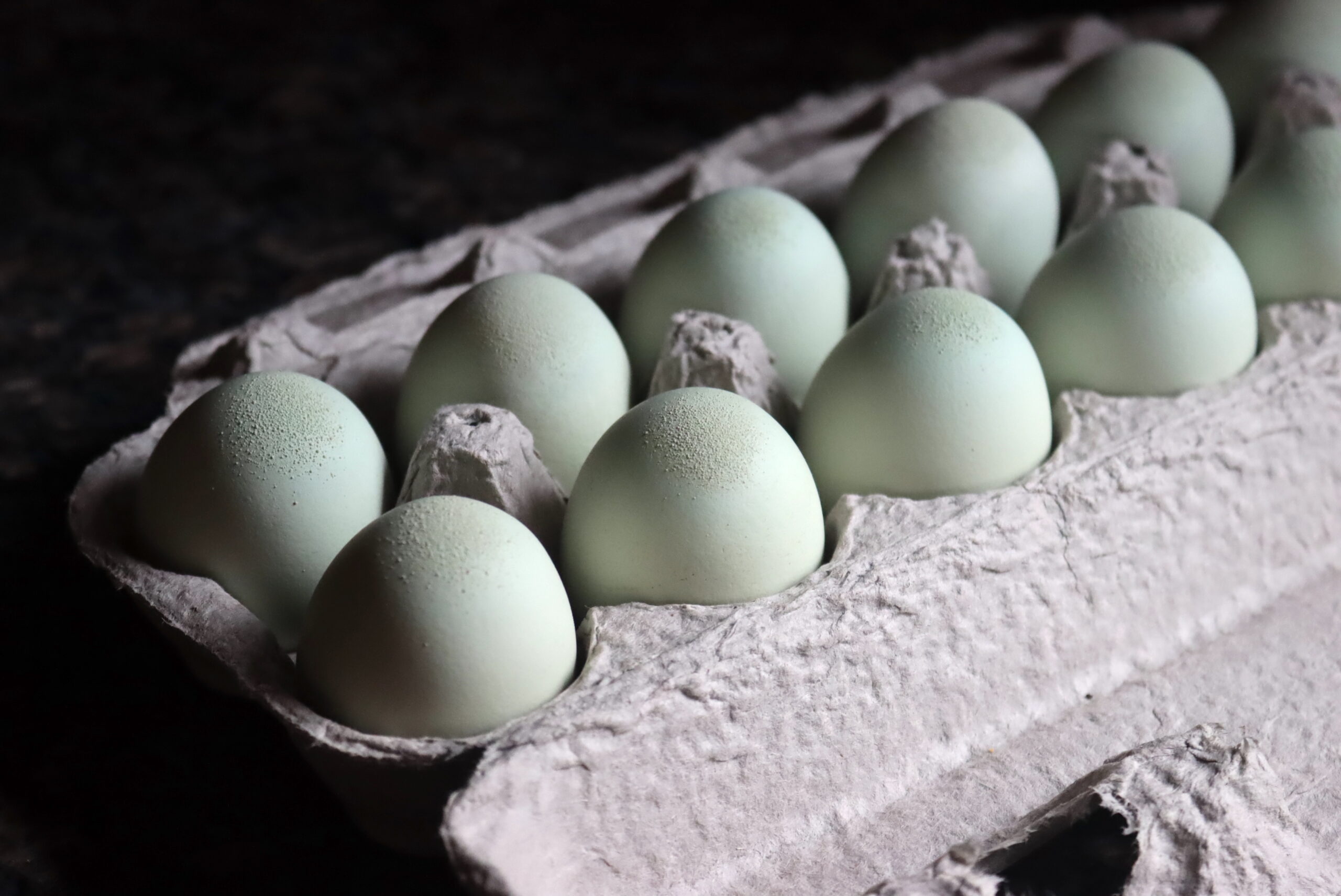
Slab-sided Eggs
At some point, you may find an egg that has a softer, flattened (or “slabbed”) side, and these are known as slab-sided eggs. When the second egg enters the shell gland while the first egg is still here, the side that makes contact with the first egg will be flat. If there have been recent changes in the lighting inside the coop, or if a bird is overly stressed, you may see this occurrence, which happens in about 1% of the total egg production. But diseases may also be a cause, so monitor carefully if these eggs show up in the chicken box.
While these eggs are generally fine to eat as long as the shell is intact, you’ll want to make sure you use them first.
Wrinkled Eggs
Some eggs appear with wrinkles and ridges, which are often caused by overcrowding, stress, defective shell glands, or infectious bronchitis. This deformity can weaken the shell but usually doesn’t affect the egg’s edibility. Even when caused by infectious bronchitis, the illness is not transmitted through the egg.
As with some other abnormalities, be sure to use these first in recipes or by themselves to ensure the best results.
Corrugated Eggs
These eggs are much courser and rougher than wrinkled eggs, with excessive surface abnormalities. This situation occurs during the plumping process when fluids are pumped into the eggs right before the shell overlay. If this process is interrupted, corrugation occurs.
You’re more likely to see these eggs from older hens, but young chickens can lay them, too. Other causes may include salty water, heat stress, mycotoxin contamination, and other forms of poor nutrition. In situations where the shells are not compromised, they should be fine to eat.
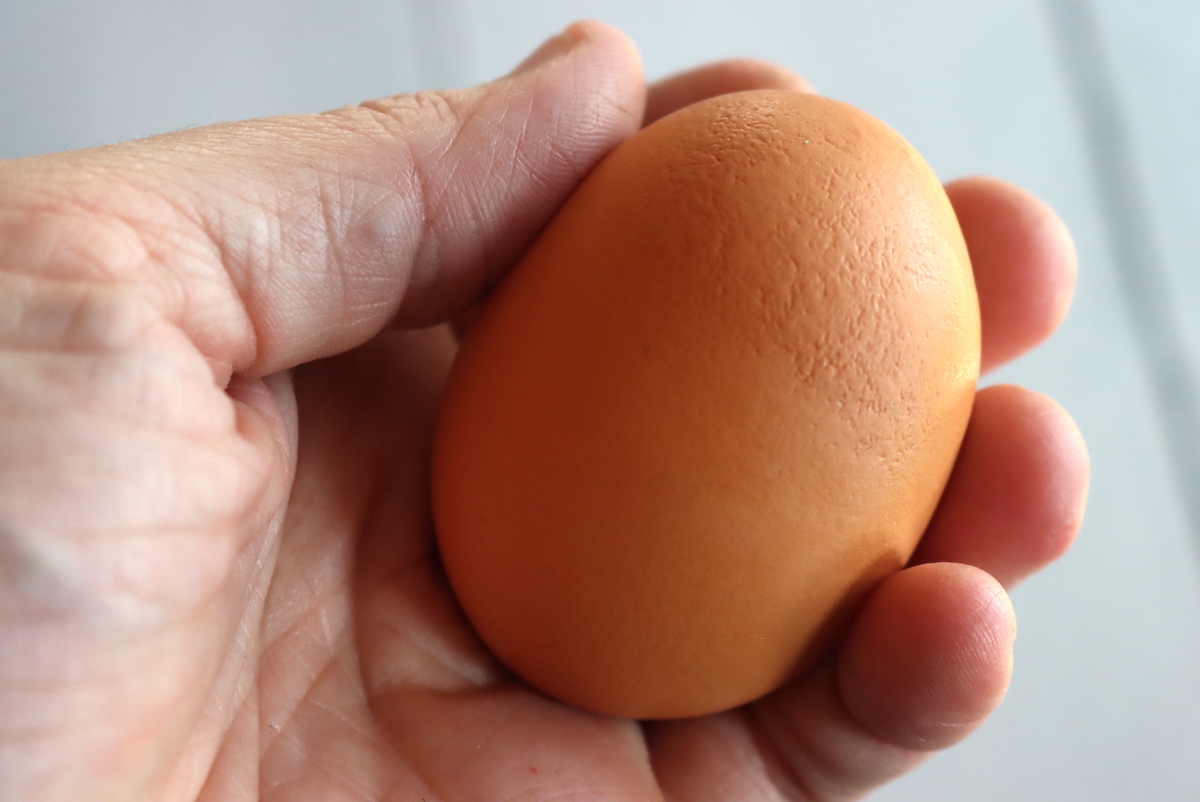
Mottled Eggs
Looking at these eggs with the naked eye may make them look more spotted than anything else. But it’s easier to see the shell differences if you candle them. They’re most likely to happen when the eggshells are not able to dry out quickly and are often caused by an overcrowded hen house.
Other causes of mottling include overcrowding, mycotoxin contamination, and manganese deficiency. Some form of mottling is incredibly common, and you’re likely to see this at some point in your chicken-keeping career. However, it doesn’t usually make an egg unsafe to eat as long as the eggshell isn’t cracked or compromised.
Cracked Eggs
While eggs can crack from physical damage (pecking, dropping, etc), sometimes eggs come out with hairline cracks. These cracks will often be “star shaped” around a single point hole in the shell, but they can also be linear cracks along a weak ridge in the shell.
Cracked eggs are most common in older hens that aren’t producing the best shells anymore, but they can also happen in young flocks as the result of heat stress, salty water or calcium or vitamin D deficiency.
These types of eggs can leak or be contaminated in the coop, and are generally not sold (or used).
Dirty Eggs
Everyone’s bound to have dirty eggs at some point, even if you are keeping the coop and nesting boxes meticulously clean. If it’s an issue in your coop, and you are keeping the nesting boxes clean, there may be other causes.
Dirty or stained eggs can be caused when your flock has wet or pasty droppings, which is usually the result of poor gut health or indigestible compounds in their feed. If you’re supplimenting their feed with kitchen scraps, make sure you’re avoiding too much wheat, barley, rye, casava, yucca and tapioca. All of those are known to impact chicken gut health.
Also, make sure their water is clean and fresh.
Dirty eggs are washed and used (or sold). Stained eggs can be washed and used at home, but they’re not usually sold.
Bloodstained Eggs
This is a common issue with young flocks, especially when the weather warms quickly in the spring, and they begin laying maybe a bit on the early side. It’s usually a temporary problem, that your flock will grow out of.
The eggs can be washed and used as any other egg.
Lash Eggs
A lash egg may resemble a real egg in shape and size, but it’s actually a buildup of puss and infection. The mass can also contain tissue and yolk-like features, but it should always be handled carefully!
The most common cause of a lash egg is an infection, usually bacterial in nature, and most often coliform salpingitis. The reason it’s crucial to treat lash eggs with caution because this infection is one of the most common causes of death in laying chickens. The good news is that it can be cured, although it may leave the chicken unable to produce eggs in the future.
It’s not contagious, but keeping coops clean is important to discourage an illness-producing environment. Many times, a chicken that exhibits a lash egg is already infected and may not make it. Others are treated and live happy lives afterward. The important thing is to monitor the situation to make sure it doesn’t advance. As a preventative, many chicken keepers add apple cider vinegar and garlic to their chicken’s food and water. It’s a great way to boost the immune system and guard against other issues.
Chicken Keeping Guides
Looking for more chicken-keeping guides?
- How Much Does it Cost to Keep Chickens?
- Beginner’s Guide to Chicken Egg Colors
- What’s the Difference Between a Duck Egg and a Chicken Egg?
- How to Raise Chickens (Beginner’s Guide)
- How to Raise Baby Chicks into Adult Hens
- 12 Best Egg Laying Chickens for Beginners


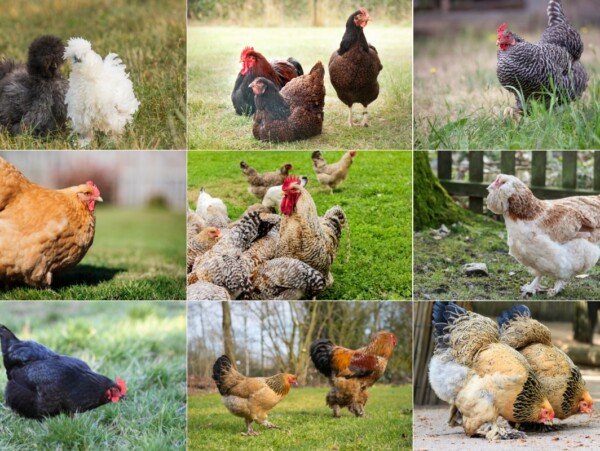
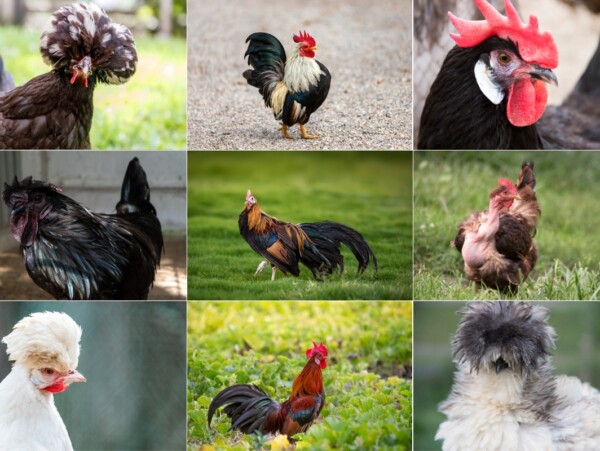
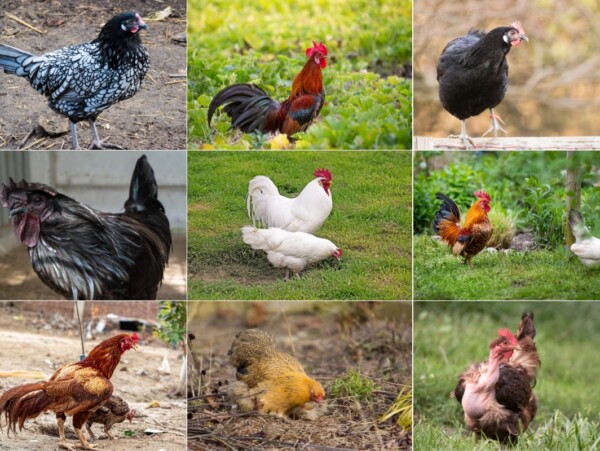










Many years ago had chickens and had the pleasure of getting a fully formed egg in an egg. Fascinating, but I felt so bad for the chicken. Huge!
I’ve been following your posts for a long time. We are hoping to build in the coming year on off-grid land. Scary, exciting?
Anyway, it’s in bear country and elk, deer, mountain lion, snakes, wolves, and I’m sure some critters I’ve missed. Many years ago we had chickens, 2 pigs, bees, gardens, but I’m concerned about doing them where so much wildlife is. Do you have a post about keeping your animals, gardens, fruit trees, bees, safe in an off-grid situation? I’d love to know. FYI, love the plethora of information you post. Always so interesting.
How exciting for you! I don’t have a specific post about living off grid safely with wildlife, but if I had any advice, it’d be get a dog, specifically a male dog that roams the property and marks territory. It’s not about defending or actually going toe to toe with predators, so even a small dog is fine. The real benefit is the scent marking, and since we’ve had a dog marking we’ve had far fewer predators around the coop (and also far fewer deer/groundhogs in the garden). It’s working well for both herbivores and carnivores.
This past summer we had an old dog pass and we buried her on the property, 3′ down. Months later we visited the land only to find her gone. Neighbor has seen mountain lion, wolves and a mama bear with 2 cubs on his trail cam. Told bears can smell that deep down. So, our poor old gal likely fed mama and babies for the winter. 🙁 So, I’ve been worried I won’t be able to do a compost pile once there. Still have the female dogs brother, but he’s nearing the end as well. Guess we’ll have to get another. Thanks for the suggestions.